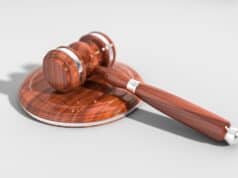Parking lots may seem straightforward and harmless, but they can quickly become hazardous when drainage systems fail. From pooling water after heavy rain to slick, icy patches in colder months, poor drainage is a significant factor in pedestrian slip and fall injuries. Property owners and managers often underestimate the dangers of these conditions, leaving pedestrians vulnerable to falls that can cause serious harm. In such cases, seeking help from Denver attorneys for pedestrian crashes can be crucial in understanding your rights and pursuing fair compensation. Understanding how drainage issues lead to accidents and what can be done to prevent them is essential for both safety and liability reasons.
The Hidden Dangers of Poor Drainage
Poor drainage in parking lots often goes unnoticed until it causes a problem. Standing water, uneven surfaces, or slow-draining puddles may appear harmless, but they pose significant risks to pedestrians. Wet surfaces drastically reduce traction, making it easy for someone to slip, especially when walking briskly or carrying items. Over time, water that doesn’t drain properly can also degrade the surface, leading to cracks and potholes that create even more tripping hazards.
In areas that experience colder temperatures, poor drainage becomes even more dangerous. Pooled water can freeze overnight, turning into patches of ice that are difficult to see but easy to slip on. These conditions make parking lots one of the most common areas for pedestrian injuries during the winter months.
How Drainage Design Plays a Role
The design and maintenance of a parking lot play a massive role in whether drainage problems occur. A properly constructed lot should have a slight slope to guide water toward drains or runoff areas. However, many older or poorly designed lots lack this feature, resulting in puddling in low-lying areas.
Blocked or clogged drains are another common issue. Leaves, trash, and debris often accumulate in drains, preventing water from flowing away efficiently. Without regular maintenance, even a well-designed drainage system can fail, putting pedestrians at risk every time it rains or snows.
Types of Injuries Caused by Slips
When a pedestrian slips in a parking lot due to poor drainage, the resulting injuries can range from minor bruises to life-altering conditions. Common injuries include sprains, fractures, and cuts, but more serious accidents can lead to head trauma, spinal cord injuries, or broken hips, particularly for older individuals.
Slip injuries don’t just cause physical pain; they also bring financial and emotional burdens. Medical bills, time off work, and long recovery periods can make the aftermath of such an accident especially stressful. These situations often highlight the importance of holding property owners accountable for unsafe conditions.
Prevention Through Proper Maintenance
The good news is that many drainage-related hazards are preventable. Regular inspections of parking lots can help identify early signs of poor drainage, such as water pooling or small cracks forming in the pavement. Property owners should ensure that drains remain clear of debris and that damaged surfaces are promptly repaired to prevent water accumulation.
Adding textured, slip-resistant surfaces or proper signage can also help reduce risks. In colder regions, applying de-icing materials promptly when temperatures drop is essential to keeping pedestrians safe. Investing in regular maintenance not only prevents injuries but also reduces the likelihood of legal liability for property owners.
Legal Responsibility of Property Owners
Property owners and managers have a legal duty to maintain safe conditions for anyone who uses their premises. Failing to address drainage problems can be considered negligence if it results in a pedestrian slip and fall injury. In many cases, victims may have the right to seek compensation for medical expenses, lost income, and other damages.
Proving liability often requires evidence such as photographs of the hazard, maintenance records, and witness statements. This is why documenting the scene immediately after an accident is critical for building a strong claim.
Taking Action After an Injury
If you or someone you know has suffered a slip and fall injury in a parking lot, taking swift action is crucial. Seek medical attention immediately to ensure your injuries are properly documented. Report the incident to the property owner or manager, and if possible, take photos of the area where the accident occurred.
Consulting a pedestrian lawyer can help you understand your legal options. An experienced attorney can evaluate your case, gather necessary evidence, and guide you through the process of seeking compensation for your injuries.
Conclusion
Poor drainage in parking lots is more than an inconvenience; it is a serious safety hazard that puts pedestrians at risk of painful and costly injuries. By understanding the causes and consequences of these accidents, property owners can take proactive steps to create safer environments. If you have been injured due to unsafe parking lot conditions, consult skilled Denver attorneys for pedestrian crashes to protect your rights and pursue the compensation you deserve.






